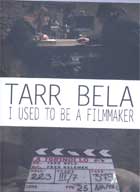
Tarr Béla, I Used to be a Filmmaker 2013
Distributed by Cinema Guild, 115 West 30th Street, Suite 800, New York, NY 10001; 212-685-6242
Producer n/a
Directed by Jean-Marc Lamoure
DVD, color, 85 min.
Sr. High - General Adult
Film
Date Entered: 09/18/2014
Reviewed by Oksana Dykyj, Head, Visual Media Resources, Concordia University, MontrealHow often do we watch “making of” documentaries that are part of the “special features” section of DVDs and Blu-ray discs only too be disappointed by their flimsy content? Occasionally a documentary about the making of a film comes along with insight about the film and its making. Tarr Béla, I Used to be a Filmmaker is such a documentary and it is truly an essential teaching experience for aspiring and existing filmmaking students. I do not remember another documentary on the making of a film that so meticulously shows us how the camera is set up, how it moves in relation to the actors and crew and then shows us the actual shot that the camera took, in a way that both transforms the act of capturing as well as the finished product. While Béla Tarr and his usual crew and actors worked on his last film, The Turin Horse (2011), Jean-Marc Lamoure and his crew tried to unobtrusively capture the creative process and they succeed most particularly with the didactic aspects.
“You can only film reality but you can also create it. You extract what you want from reality: That’s fiction”, says Tarr in voice-over as we watch him direct a huge wind machine with a man throwing leaves in front of it while a camera mounted on a truck captures a shot of the horse pulling a cart in extreme wind. Then to create more wind, a helicopter hovers above them all. The shot, as it appears in the finished film in black and white, is absolutely breathtaking. Working in the way silent films were produced and then also a number of later European films, Tarr post-syncs his films, meaning that the dialogue, music and sound effects are added and mixed in post-production. This allows him to work with his actors during filming, by providing direction when needed and allowing them to listen to mood music to improve their performances.
Lamoure interviews the two lead actors and the music composer, whose own interesting creative process is revealed. The two actors do not provide much insight into how they work unfortunately, and their interviews are the weakest points in the film. There are also some minor issues with correct translations for the subtitles but these small problems do not detract from the overall sense of the film. Any library with a collection of the few Béla Tarr films that exist should purchase this documentary.